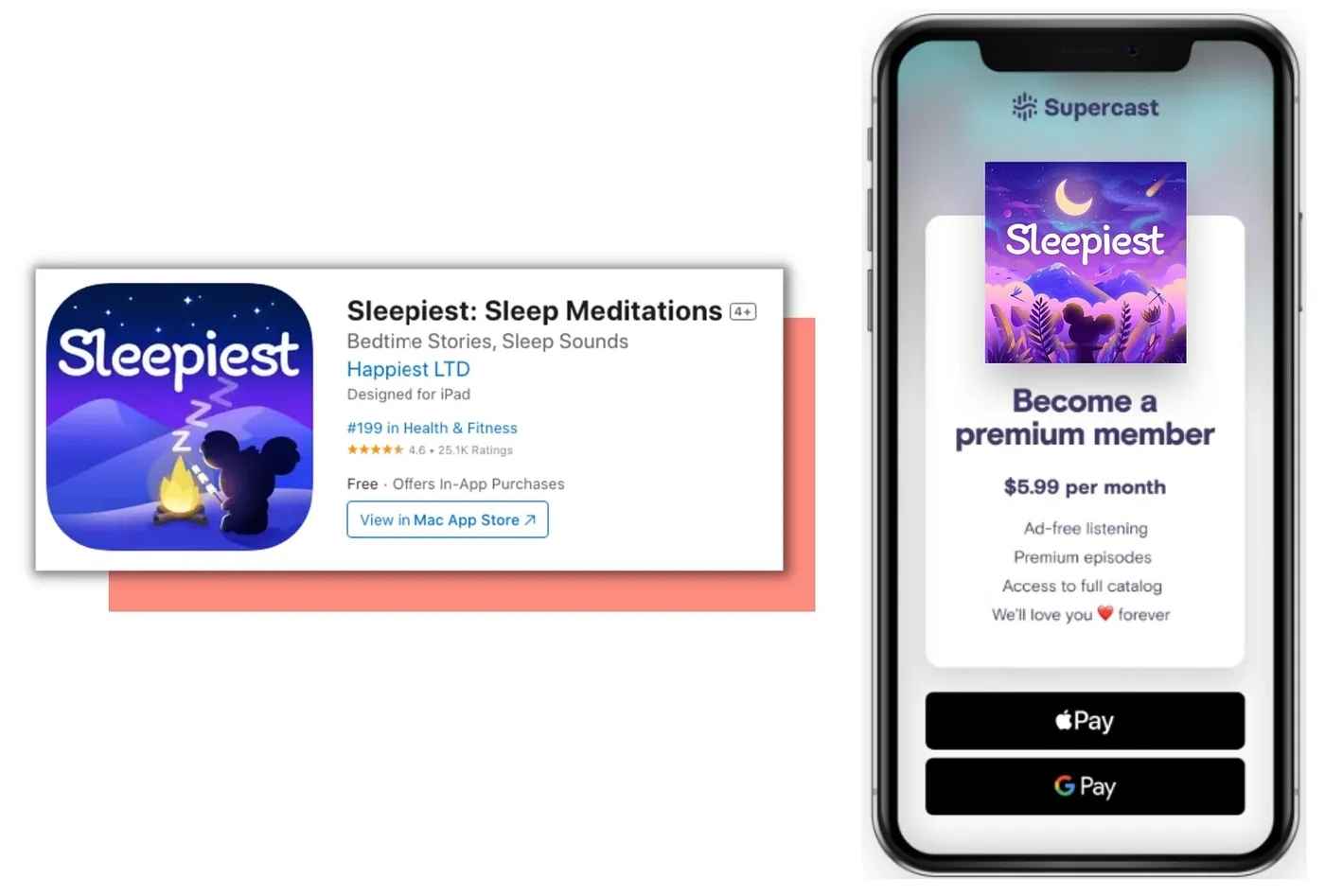What Brands Need to Know About Private Podcast Feeds

Last week was Podcast Movement Evolutions in Las Vegas, an annual convergence of podcast creators, investors, marketers and lovers, all coming together to talk shop. This year, I had the opportunity to collaborate with Jason Sew Hoy, CEO and Co-Founder of Supercast, to share some thoughts and ideas in a presentation titled “For Your Ears Only: What Brands Need to Know About Subscription Podcasting”. Let me share our thoughts with you here.
So, What Kinda Feeds Are We Talkin’ About Here?
To begin, let me explain what kinds of feeds we are talking about here. There’s been a lot of chatter in the last couple of years around “subscription podcasts” (fuelled largely by the introduction of subscriptions being directly integrated into the Apple Podcasts). In this model, listeners pay for access to exclusive content, bonus episodes or an ad-free feed. Supercast provides the infrastructure to set up a subscription feed, allowing you to collect payment from subscribers. However, this same technology can also be used to provide a free, yet private, podcast feed. In this case, rather than paying for access, listeners can simply provide their email address to add the podcast to their queue. Let me highlight how brands can, and should, use this technology to enhance their podcast strategy.
But Why Would You Build a Wall?
So, at this point I’d like to address the concern that’s probably already popped into your mind. Building an audience for a podcast is already hard enough! Why would you make it private? Look, I understand your concerns. But give me a chance to convince you that there are 4 ways that a private feed can help brands elevate their podcast strategy.
1. Internal Comms
You may already be familiar with this use case. Brands have been interested in using private podcast feeds to produce internal podcasts for some time now (in fact, we even have a blog post about it from 2019), and we’ve worked with several clients in this capacity. Essentially, an HR team or internal comms department is looking to create a podcast to communicate with their employees. They may turn to a podcast for a few reasons. Podcasts present an opportunity to engage employees that may be fatigued by email. They’re accessible for employees that work on their feet, drive long distances, or are otherwise largely offline and unlikely to read lengthy emails. Or perhaps a dispersed workforce makes coordinating a live town hall a logistical nightmare.
Internal podcasts are used to achieve four main strategic goals:
- Private information sharing: Communicating private information around company financials, new strategies or policies, or other relevant information to employees or investors using a secure, private feed
- Culture building: Helping to foster the culture of the company, sharing brand values and goals with the team, and helping to foster retention
- Education and skills building: Sharing informative materials available only to employees to help them up-skill and perform their jobs more effectively
- Onboarding: Sharing company history and policy with the team in an accessible way that eliminates costly and repetitive online or virtual onboarding sessions
2. Lead Generation
One of the primary reasons for brands looking to produce a podcast in general is the opportunity to convert podcast listeners into paying customers. The problem with this historically has been the lack of data available about who is actually listening to the podcast. We’re able to craft a crude profile about who the average listener might be, but it’s traditionally been difficult to capture contact information of listeners and encourage conversion. But private podcast feeds provide the opportunity to replicate the content marketing funnels we’ve seen across other media platforms.
While a public podcast feed can be broadly accessible and serve to raise brand awareness, an additional layer of private content can be added to move highly engaged listeners further down the funnel. Listeners who are really enjoying the content can provide their email address for access to additional content, and being able to see these email addresses is really powerful for brands. Being able to identify corporate emails gives brands an idea of whether the podcast is reaching the right audience and helps identify potential prospects. It also presents the opportunity to follow up with heavily engaged listeners, further encouraging conversion.
We always persuade our clients to keep the brand touch light, creating a podcast that audiences will actively want to listen to and recommend to their friends. No one wants to listen to a long infomercial! However, behind the wall of the private podcast feed, we can bring listeners a little closer to the brand. At this stage, they’ve indicated their deep interest in the podcast, and we can use this as an indication that this audience is potentially interested in learning more about the products or services you offer.

3. Deeper Engagement
Private podcasts also provide an opportunity to strengthen existing relationships with previously identified leads. The benefit of the private feed in this case is the exclusivity– access to this feed can make your target audience feel special, just by virtue of being able to access content not available to others.
For example, many companies regularly organize invite-only conferences for previously identified heavy hitters in their industry. This is a great opportunity to get closer to potential leads or recruit highly skilled talent. However, it only happens once a year! Offering a private podcast feed to attendees of the conference can reinforce the exclusivity of the event, create additional value in attending, and provides an opportunity for ongoing touchpoints with the brand. Rather than connecting with this group of people once per year, the private podcast allows ongoing connection every time a new episode is released.
4. New Revenue
To wrap this up, let’s summarize possibly the most obvious use case of private podcast feeds: generating new revenue. In this case, brands actually do charge subscribers for access to bonus or exclusive content. Of course, this makes a lot of sense for existing media companies. If you’re already producing content, a subscription podcast feeds presents a new potential revenue stream. It also makes sense for brands that are already producing and monetizing their audio content across other platforms. For example, the Supercast client Sleepiest has an app that features sleep meditations. They were able to repurpose this audio and place it behind a paywall on a podcast feed, making it easily discoverable for an entirely new audience that may never have come across the app.

This is also a great opportunity for brands that monetize educational content or training. Podcasts are a great educational tool, and creating a subscription podcast feed featuring well-produced, exclusive, educational content can be a great opportunity to generate an entirely new line of business.
The technology that powers private podcast feeds provides brands with an opportunity to develop and execute a truly sophisticated podcast strategy. But remember: if you do decide to put your podcast behind a wall, you better make sure that podcast is really, really good!
Sign up for the Pacific Content Newsletter: audio strategy, analysis, and insight in your inbox.
